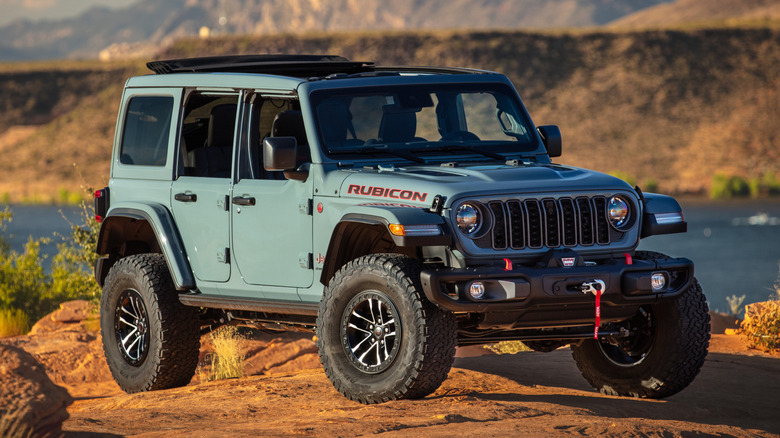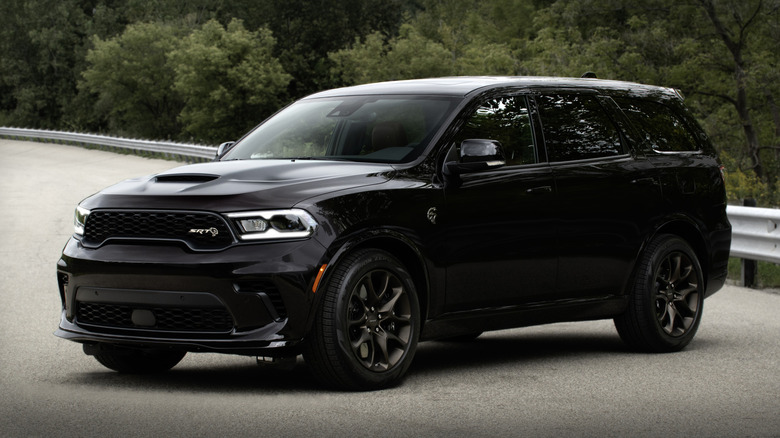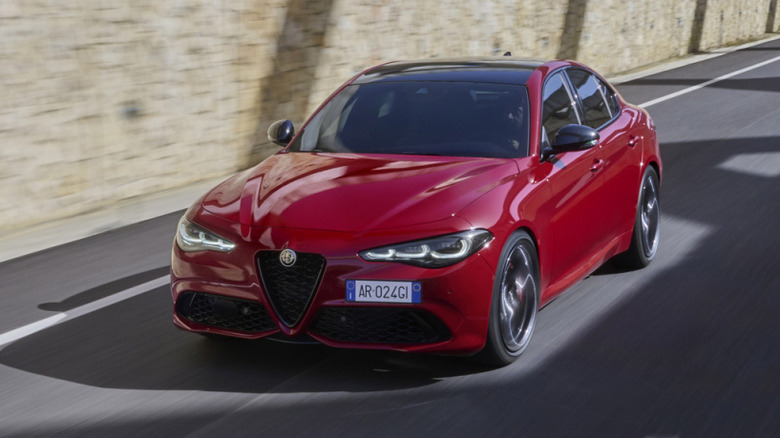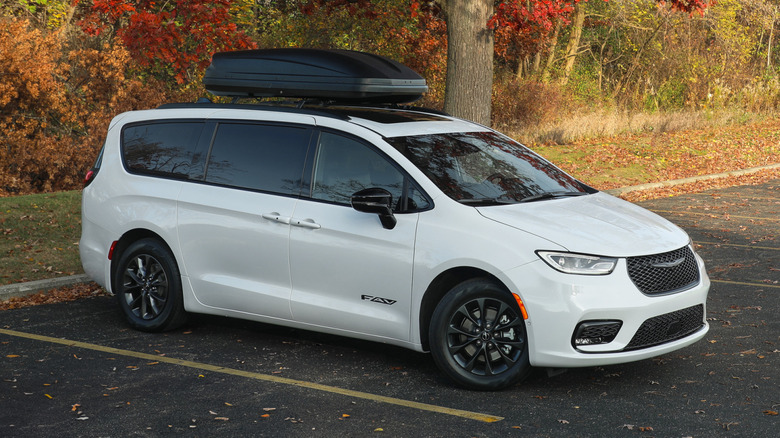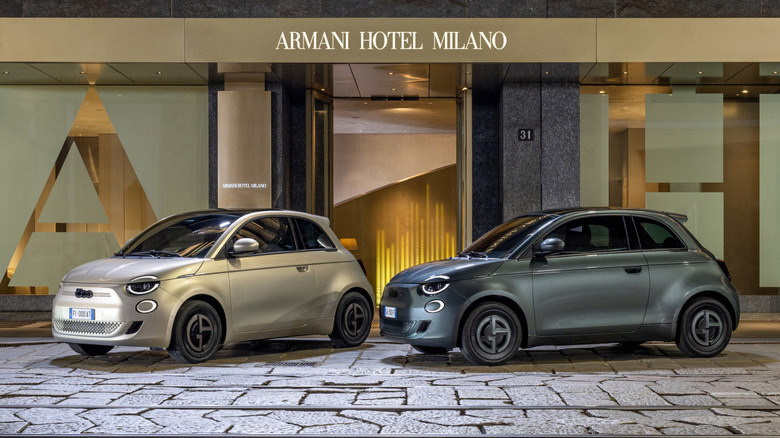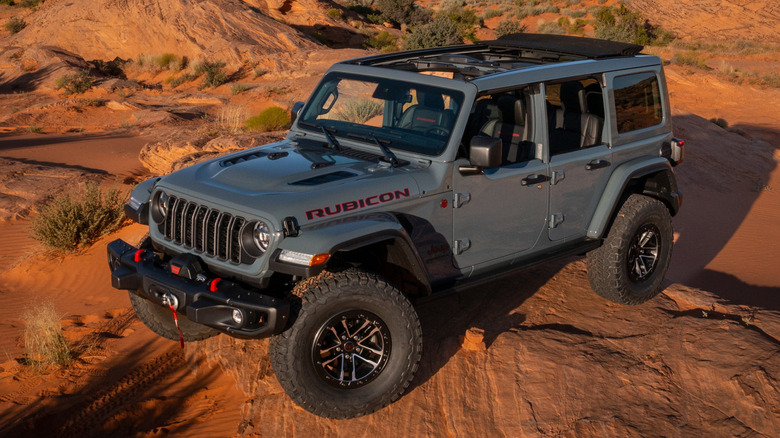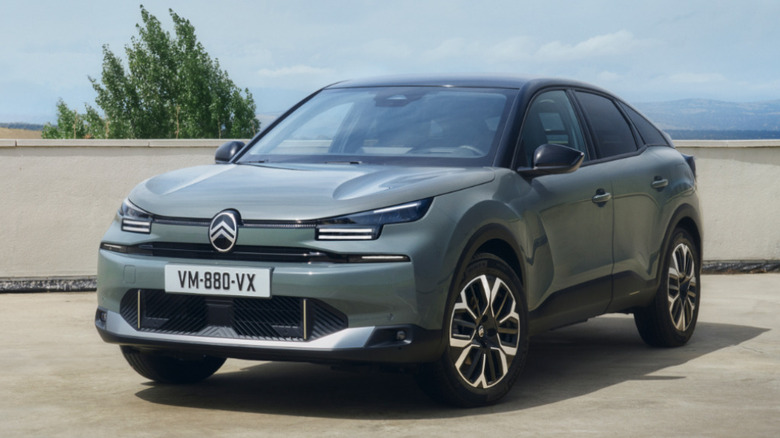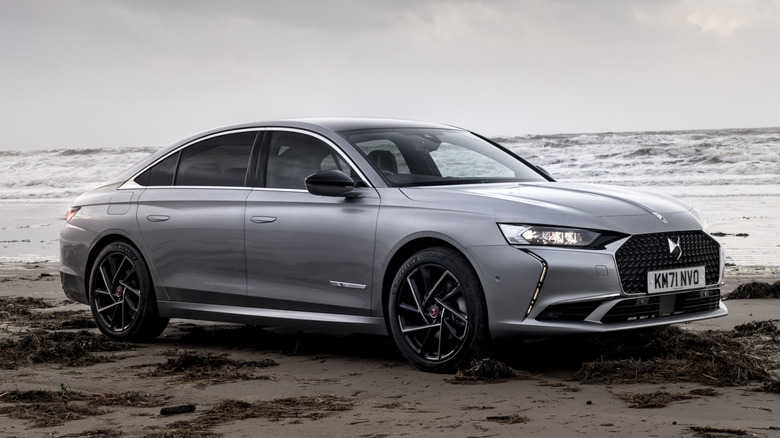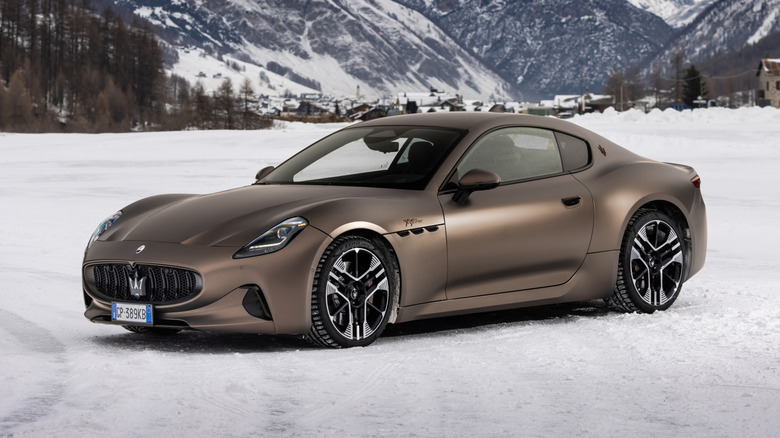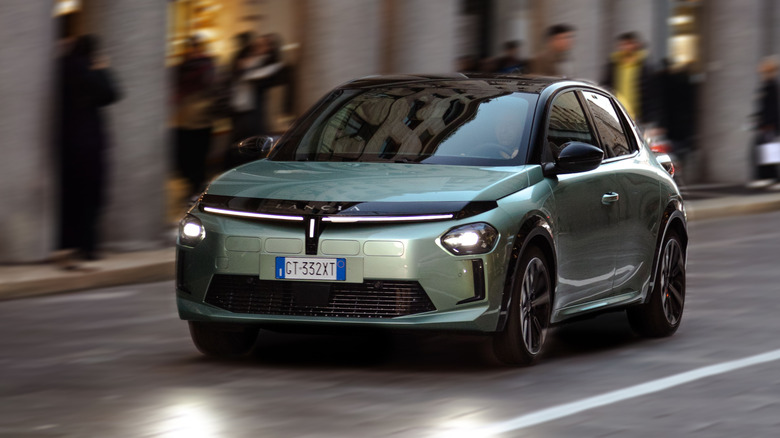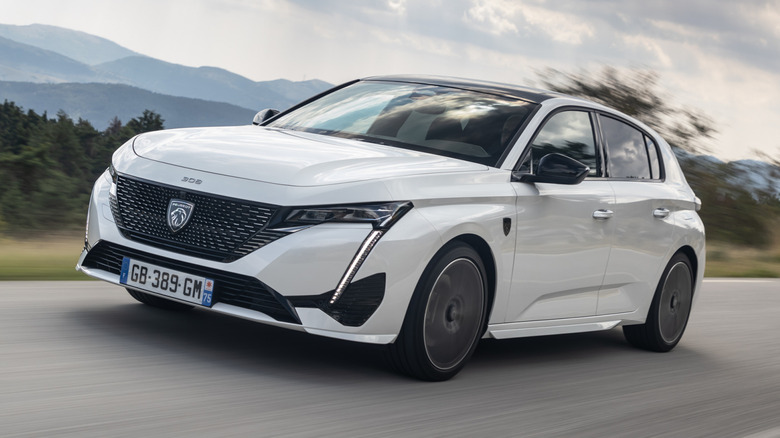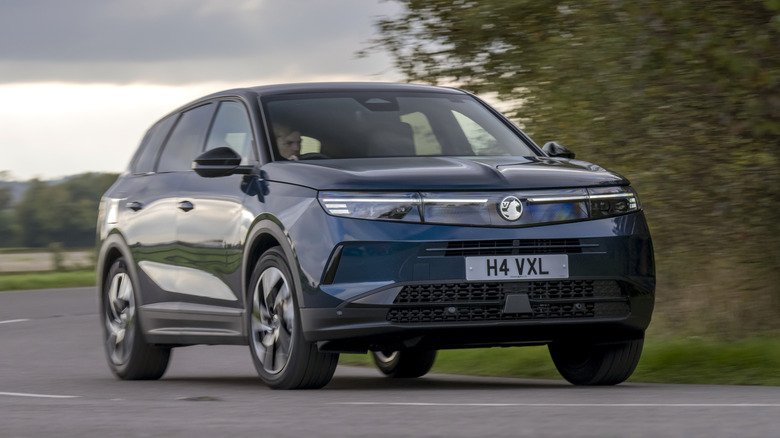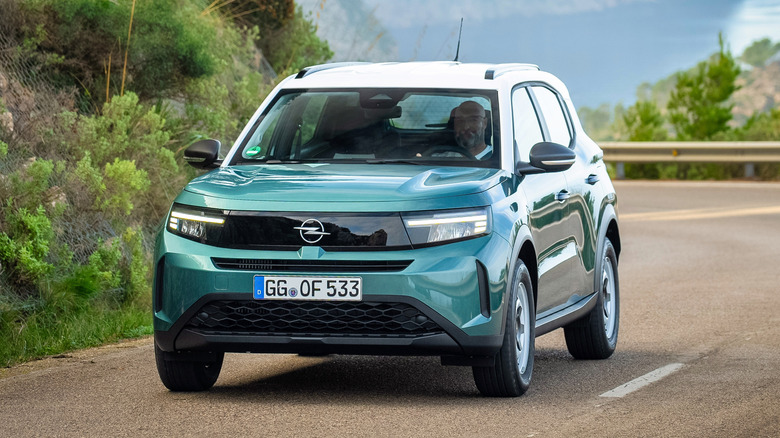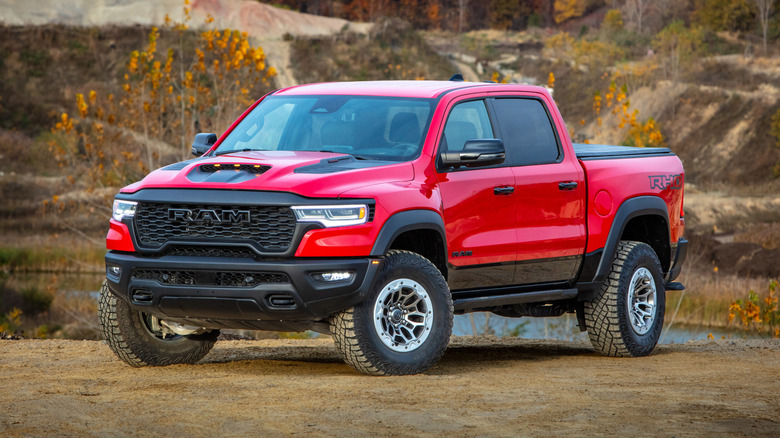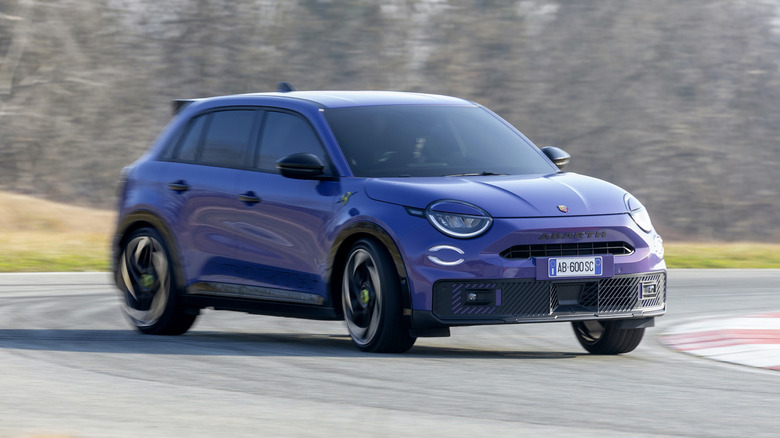Every Car Brand Stellantis Owns In 2025
One of the world's largest car-making conglomerates, Stellantis only came into existence in January 2021. It was formed by the merger of two major international automakers, PSA Group and FCA, and brought together a lineup of 14 different brands under one umbrella. Stellantis originally pledged to invest in all 14 brands for at least a decade, but tumbling profits and inventory buildups through 2024 saw Stellantis leadership, most notably its recently departed CEO Carlos Tavares, threatening to ax brands that didn't make money.
Stellantis later walked all that back and recommitted to its 10 year plan, but it's still far from certain that the conglomerate's current roster of brands will remain unchanged through the end of the decade. For now, here is every brand currently under Stellantis' ownership, and the history of how it got there. Note that Leapmotor, a Chinese joint venture, is not included, as it isn't solely owned by the conglomerate.
Dodge
One of several iconic American brands under the Stellantis umbrella, Dodge can trace its heritage back to the start of the U.S. automobile industry. After making a name for themselves supplying parts for Ford, the Dodge brothers branched out and launched their eponymous mark in 1914. By the end of the decade, Dodge had expanded into one of America's largest automakers, and built its 400,000th car in 1919, just five years after its launch. Chrysler Corporation bought the Dodge brand in 1928, and it would remain under Chrysler ownership for many decades.
It's perhaps most famous for being one of the biggest names in the muscle car wars, but Dodge also helped shape the future of the U.S. auto industry by launching the Caravan in 1984. One of Dodge's most successful models, it essentially created the minivan segment in America, alongside its Plymouth-badged counterpart the Voyager. In 1998, Chrysler merged with Daimler to form DaimlerChrysler, bringing the Dodge brand with it. The Great Recession saw Daimler and Chrysler separate once again, then in 2014 Chrysler merged with Fiat to form FCA, bringing Dodge along with it.
Dodge's current lineup is a transitional one, with the brand only offering the long-running Durango SUV and the Hornet crossover as of this writing. The controversial reborn 2025 Dodge Charger, complete with its all-electric powertrain, has also recently begun deliveries.
Alfa Romeo
Founded in 1910, Alfa Romeo has a long and storied heritage producing both road and race cars. Since the beginning, it has produced cars in its home city of Milan, Italy, and during World War I it also produced aircraft engines, ammunition, and even trains. Its early cars found fame by winning legendary races like the Targa Florio and 24 Hours of Le Mans, and counting the likes of Enzo Ferrari and Juan Manuel Fangio among its roster of drivers. The former would go on to create his own race team to directly compete against his old employer.
Alfa Romeo has spent periods under both public and private ownership, being initially formed as a private company, but then saved from collapse by the state-owned Istituto per la Ricostruzione Industriale (IRI) in 1933. It would later become part of Finmeccanica, a group under the control of IRI, before being eventually sold off to the Fiat Group in 1986. When Fiat and Chrysler merged into FCA, Alfa came with it.
Despite launching several new and refreshed models, Alfa Romeo's sales remain slow, and the Italian government has been increasingly putting pressure on Stellantis to ensure the brand and its workforce are protected for the foreseeable future. Its outlook for now remains uncertain, but it still seems unlikely that the brand will be one of the names heading for retirement in Stellantis' potential shakeup.
Chrysler
Arguably more so than any other American brand in the Stellantis group, Chrysler's future remains a mystery. While Dodge, Jeep, and Ram have all unveiled plans for their upcoming models, Chrysler's leadership has remained tight-lipped, with reports suggesting that an as-yet unnamed electric SUV will be unveiled sometime in 2025. Further new model launches are expected in the following years. As of this writing, Chrysler's lineup consists solely of the Pacifica and Voyager minivans, with the latter being brought back for customer purchase for the 2025 model year.
It's a strange situation for the brand to find itself in, particularly given its history. The first Chrysler-branded car was launched in 1924 and just four years later the Chrysler Corporation had bought out one of its biggest competitors, Dodge. The two brands have remained under the same ownership since then, through Chrysler's 1998 merger with Daimler, then its independence post-recession and 2014 merger with Fiat to form FCA.
Alongside a changing roster of other body styles, sedans remained an important part of Chrysler's lineup until the 300 joined the rather long list of popular cars discontinued in 2024, leaving the brand offering only minivans for the first time in its history. While those minivans remain popular with buyers, it remains to be seen whether Chrysler can find success with its upcoming SUV, an area in which it has virtually zero experience, aside from the short-lived Aspen.
Fiat
Fiat was one of the earliest Italian automakers, first opening its doors in 1899. It was originally a small outfit but its owner Giovanni Agnelli was reportedly inspired by the success of Ford in America and decided to employ the Blue Oval's mass production techniques. Subsequently, production volume increased over the following years, spurred on by the launch of the popular 500 city car in 1936. The larger 600 would follow three decades later and take Fiat to new heights of popularity in its home country.
Throughout the '70s and '80s, Fiat launched a major international expansion, building factories all over the world and entering new markets. Throughout the expansion, the Agnelli family remained owners of the brand. The family is one of Italy's most powerful, with ownership stakes in everything from shipping to sports teams. Today, they are the largest shareholder in the Stellantis group, with a stake of around 14.2%.
As such, Fiat remains one of Stellantis' most important brands, as well as being its bestselling brand by volume. In 2023, it sold over 1.35 million cars, an increase of 12% over the previous year. However, like many Stellantis brands, it has seen a sharp decline in sales in 2024. Among others, models in its European lineup include the 500, 600, and Panda, although in the U.S., only the 500 remains available.
Jeep
Originally born from a wartime military vehicle design by Willys-Overland, the first civilian Jeep was launched in 1945. Less than a decade later, Willys-Overland had been bought by Kaiser, which planned to expand Jeep's lineup to include multiple vehicles. Each one would be as off-road capable as the original Jeep design, but add comfort and convenience features to appeal to a wider range of buyers.
The expansion was highly successful, and by the time Jeep changed hands again in 1970, it was valued at $75 million. Its buyer was American Motors (AMC), which would retain ownership until it was itself sold to Chrysler Corporation in 1987. From then, Jeep would remain part of the Chrysler family of brands through the DaimlerChrysler and FCA years, before becoming part of Stellantis during the conglomerate's formation in 2021.
Jeep's lineup remains mostly faithful to its original ethos, prioritizing all-terrain capability above all else. However, its sales have consistently fallen since the middle of the last decade, prompting the brand's CEO to issue a turnaround plan. Said plan involves cutting prices and widening its lineup to compete in a bigger variety of segments. It's a promising start, but it seems Jeep still has a rocky road ahead to get back to its former highs.
Citroën
Citroën's first car, appropriately named the Type A, was launched in 1919. The brand quickly grew in popularity, becoming one of France's biggest carmakers in the 1920s. However, by the time the next decade rolled around, its fortunes had changed. By the mid '30s it had run out of cash, and its assets and brand were sold to Michelin, its biggest creditor at the time. Much of its assets — including its factory — were destroyed in World War II, but Citroën rebuilt itself over the following decades, releasing pioneering models like the 2CV and the DS.
After a period of turbulence in the late '60s and early '70s, during which Citroën briefly acquired Maserati and Michelin sold its stake in the company to Fiat, the company ran out of cash again. It was acquired by Peugeot in the mid-'70s, with Peugeot's parent company subsequently rebranding to PSA. In 2021, Stellantis was formed by a merger between PSA and FCA.
Citroën continues to sell a range of quirky cars today, mostly in Europe but also in markets across Africa and South America. Its sales data for 2024 doesn't look promising — a report by JATO Dynamics cites a 41% decline in sales year-on-year for September 2024. However, considering the French government holds a minority stake in Stellantis, it's hard to see the brand disappearing from the conglomerate's roster anytime soon.
DS Automobiles
While its sister brand Citroën can look forward to many years of future investment by Stellantis, DS Automobiles will have a tougher time continuing to justify its existence. It borrowed its name from the classic Citroën DS of the '50s, launching in 2014 as an upmarket spinoff of the Citroën brand. It has gradually expanded its lineup, which is available in select European markets including the U.K., to include hatchbacks, SUVs, and sedans.
At one end of its lineup, the DS 3 hatchback starts at £31,200 (roughly $38,800) in the U.K. as of 2025, while at the other end, the plug-in hybrid DS 9 sedan, pictured above, costs at least £55,525 (roughly $69,000). It's tricky to gain a picture of DS' overall sales across all markets, as Stellantis doesn't publish official figures.
However, data published by AM Online gives an insight into the brand's status in one of its main markets, the UK, with the latest reports showing DS has a paltry 0.07% market share. For context, competitors like Lexus hold a 0.86% market share, while BMW and Audi sales represent 6.51% and 6.58% of the market respectively. With figures like that, it seems likely that DS will be one of the first brands facing the chop if Stellantis decides to cull its current roster.
Maserati
Stellantis executives drew headlines in mid 2024 with a series of comments seemingly suggesting that the conglomerate would be open to selling Maserati. An official statement was later published denying that the brand was for sale. Regardless, Stellantis has made no secret of the fact that it is disappointed in Maserati's 2024 sales. It even went as far as firing the brand's boss. Maserati is no stranger to financial trouble — it's been cash-strapped for much of its long history.
The first car to wear a Maserati badge was built in 1926, and in its early years, the brand focused solely on racing. Its first road car arrived in 1947, by which time, Maserati was owned by the Orsi family. Citroën took over the brand in 1968, and then a few short years later, sold it on to De Tomaso. The Maserati brand was relaunched under De Tomaso, but struggled with persistent underfunding and build quality issues. De Tomaso eventually sold Maserati to Fiat in 1993 and was given a fresh round of much-needed investment.
Fiat sold Maserati to Ferrari, which itself was part of Fiat Group at the time, in the late '90s. Maserati remained under Ferrari's ownership until 2005, when it was sold back to Fiat. Ferrari would gradually separate itself from the Fiat Group and its successor FCA, becoming fully independent in 2016. Meanwhile, Maserati remained owned by FCA until the latter's merger to become Stellantis.
Lancia
Lancia can trace its roots back to 1906, when it was founded by Vincenzo Lancia and Claudio Fogolin in Turin, Italy. Its brand has been associated with motorsport of various forms for most of its existence, particularly rallying. It remains one of the most successful manufacturers in the World Rally Championship despite having not competed in the 21st century. Its rallying glory days were achieved when the brand was part of the Fiat Group, which it joined in 1969, but before then it had been a family-run business, first by the Lancia family and then by the Pesenti family from 1955.
The brand's presence in Europe had dwindled until the formation of Stellantis, but recent rejuvenation plans have seen Lancia's dealership network expand to over 160 locations in Italy with a further 70 locations opening in select other European markets in 2025. It's too early to judge the success of this expansion, but at the very least Stellantis bosses will want to recoup their investment, and so it won't be retired anytime soon.
Peugeot
Debuting its first steam-driven vehicle in 1889 and having made steel products of various kinds since 1810, Peugeot is the longest-lived brand in the Stellantis roster. Over its history, the brand has acquired a number of other brands, most notably Citroën in the mid-'70s after the latter ran out of cash thanks to development overspending. As part of the acquisition, a new parent company for the brands, PSA Group, would be created. The group would buy the European operations of Chrysler just a few years later, although none of the brands acquired during that takeover survive today.
Peugeot remains an essential part of Stellantis' lineup, with its cars being sold in over 160 countries and with the brand reporting a total sales volume of over 1.1 million cars in 2023. It remains one of the top ten carmakers in Europe by volume according to September 2024 data from JATO Dynamics, and is the only Stellantis brand to hold that title.
Vauxhall
As well as being the only British brand under Stellantis ownership, Vauxhall is also one of the conglomerate's oldest brands, with its first car produced in 1903. It spent much of its existence as the British division of General Motors, having been bought by the American auto giant in the 1920s and only sold to PSA Group in 2017. Vauxhall and Opel are closely linked, and share many models in their present lineup. Effectively, Opel is the continental European arm of the duo, while Vauxhall is the British-only brand.
Throughout its existence, Vauxhall has maintained manufacturing facilities in the U.K., but those facilities have been reduced under Stellantis ownership. In November 2024, Stellantis announced that it would close Vauxhall's commercial vehicle manufacturing facility in Luton, England, citing weak demand for EVs as a driving factor. What that means long term for the brand remains unclear, but for now, Stellantis has committed to supporting Vauxhall's other major factory in Ellesmere Port, England.
Opel
Originally founded as a sewing machine manufacturer before transitioning to the production of motor vehicles in 1899, German brand Opel is another of Stellantis' longest surviving marques. Much like its long-serving sister brand Vauxhall, Opel was bought by GM at the end of the 1920s and remained under GM's ownership until 2017. It was then sold to PSA Group, owner of Peugeot and Citroën, having been consistently unprofitable for many years.
It remains to be seen what Stellantis chooses to do with the Vauxhall/Opel twins — both offer mostly the same range of models, and there's little incentive to separate the two brands given their long history of intertwinement. Stellantis' now-departed CEO Carlos Tavares threatened to kill off unprofitable brands in 2024, and Vauxhall/Opel has a long history of being unprofitable. Nonetheless, both are well-known brands with large dealership networks in their respective markets, and Opel/Vauxhall remains the second largest selling Stellantis brand in Europe behind Peugeot according to JATO Dynamics data.
Ram
Throughout the 20th century, Dodge produced many pickup trucks with a Ram mascot being used on them as far back as the 1930s. In 2009, Ram was spun off as a standalone brand, initially selling pickups and then commercial vans. Alongside popular American market brands like Jeep and Dodge, Ram made up a significant chunk of Stellantis' overall profits, which peaked in 2023. However, in 2024, a glut of inventory and increased competition saw all three brands fall significantly in profitability.
Ram's pickups remain among the bestselling trucks in America, although the brand trails both Ford and Chevy in popularity. Whether Ram can restore some sales momentum in 2025 remains to be seen, but either way, it seems extremely unlikely that any significant changes to the brand's direction will be made in the coming years. It is, after all, still a strong seller, unlike a significant number of other Stellantis brands.
Abarth
Carlo Abarth spent his early career racing both cars and motorcycles, but in 1949 he decided to set up his own car company. It would focus on racing — still very much his passion — but would also build high-performance kits for the most popular Italian road cars of the era. The company's association with Fiat stretches back to its earliest days, and in 1958, Fiat signed an agreement with Abarth that would see the latter awarded cash incentives for every race that it won.
With his compensation directly tied to his racing success, Carlo Abarth doubled down on his racing efforts and won thousands of races across Europe and elsewhere, as well as racking up ten world records. Abarth would sell his company in its entirety to Fiat in 1971, and it has remained under the same ownership ever since. Its modern lineup consists of modified Fiat models, and although it remains a niche brand, there has been no indication to date that it's under threat.
